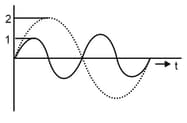Embibe Experts Solutions for Chapter: Sound Waves, Exercise 1: Exercise 1
Embibe Experts Physics Solutions for Exercise - Embibe Experts Solutions for Chapter: Sound Waves, Exercise 1: Exercise 1
Attempt the practice questions on Chapter 21: Sound Waves, Exercise 1: Exercise 1 with hints and solutions to strengthen your understanding. Physics Crash Course KCET (UG) solutions are prepared by Experienced Embibe Experts.
Questions from Embibe Experts Solutions for Chapter: Sound Waves, Exercise 1: Exercise 1 with Hints & Solutions
The displacement sound wave in a medium is given by the equation where and are positive constants. The wave is reflected by a denser obstacle situated at The intensity of the reflected wave is times that of the incident wave. Tick the statement among the following that is incorrect.
A sound wave is travelling in a medium. If equation of displacement wave in the medium is given by then equation of pressure waves will be ( Bulk modulus of medium)
A source of sound is in the shape of a long narrow cylinder radiating sound waves normal to the axis of the cylinder. Two points and are at perpendicular distances of and from the axis. The ratio of the amplitudes of the waves at and is:-
Dependence of disturbances due to two waves on time is shown in the figure. The ratio of their intensities will be:-

At the same temperature and pressure the densities of two diatomic gases are and . The ratio of velocities of sound in these gases will be
At room temperature the velocity of sound in air is The increase in velocity of sound when temperature is increased by is
Assuming the temperature to be constant, as we go up in the atmosphere, the velocity of sound
Two vibrating strings ' ' and ' ' produce beats of frequency . The beat frequency is found to reduce to if the tension in the string is slightly reduced. If the original frequency of is , then the frequency of ' is
